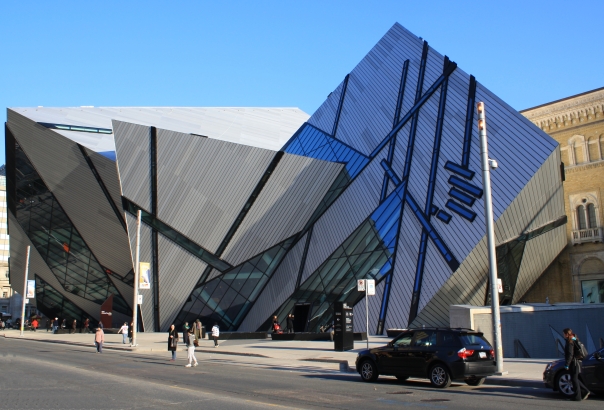Habitat launches in Canada
It’s Earth Day and the Royal Ontario Museum is launching Habitat in Canada! There will be five new Habitat pins to be found in the museum. Canadian players will be able to trade the local pins they find with other players around the world.

Aaron Philips
We sat down with Aaron Phillips from the Schad Gallery of Biodiversity to learn a little more about ROM and what they have planned.
Tell us a little about the ROM. How many kids come through a year?
- The Royal Ontario Museum is one of the largest museums in Canada, and rather unique in that we have extensive collections encompassing not just art, nature, or history, but all three under one roof! It’s a little tricky to parse just how many kids come through – but I can say that in 2015-2016, we had 1.1 million visitors at the museum, of which 100,000 were students visiting with their classes. Add to that all the kids who participate in our camp programs, as well as all those who come in with their families through general admissions and membership, and it adds up to A LOT of kids!

What have been some of your most popular exhibitions for kids?
- We’ve found that children enjoy opportunities to interact with our galleries and exhibitions in diverse ways, whether through touchable replica objects, puzzles, costumes or technology. To that end, we have had great success with exhibitions featuring interactives geared towards children (and social media savvy adults) such as our recent Pompeii: In the Shadow of the Volcano and, currently, Out of the Depths: A Blue Whale Story.
What are you doing for Earth Day?
- This Sunday (Apr 23) we’re having a building wide Family Funday program called “Earth Matters”, where we’re bringing in a number of ecology-, environment- and citizen science-oriented organizations to encourage our visitors to take action to better conserve and preserve our planet (which includes introducing them to Habitat the Game, of course!) it will be a great opportunity for visitors of all ages to learn more about environmentally-minded organizations and how they can themselves take action towards greater sustainability.
How will kids be using Habitat in the museum?
- They’ll be using it as a new way to further explore and discover some of the iconic specimens in our biodiversity galleries and exhibitions. I’d also like to think that as they complete challenges, they’ll be thinking about how the sustainability of their actions relates to the biodiversity on display. I hopeful we’ll eventually see us finding ways to leverage some of the additional learning materials developed for classroom settings by adapting it to Canadian curriculum as well.
Why have you chosen Habitat as a partner?
- Biodiversity programmes at the Royal Ontario Museum strive to help our public better understand nature and to prevent its loss through communications, research, citizen science, and community engagement. A very significant portion of our visitors are kids, and engaging them in meaningful discussions about ecology and environmental issues is a major part of our mandate. We can see that the team behind Habitat feel the same, and believe that Habitat will be an excellent addition to the means in which we connect with youth.
How do games and interaction fit in with your gallery?
- Taking inspiration from our close working colleagues in the Hands-On Biodiversity and Discovery galleries, we know that facilitating inquiry-lead, hands-on discovery of our specimens and objects in the Life in Crisis: Schad Gallery of Biodiversity is an absolute must for meaningfully engaging visitors (of all ages).
- Furthermore, over the last few years our gallery has also been proud to support our ROM Game Jam program by hosting the ROM Arcade. The ROM Game Jam sees roughly 100 video game developers invited into the Museum and, working in teams, building a video game inspired by some aspect of our research and collections. Each year, the ROM Arcade is the testing ground for a select few of these games, where visitors/players can critique and share feedback with the developers, collaborating with them on improving the games.
How interested do you think kids are about the environment/climate change?
- In our experience, we’d say “very”! Most children have a deep-seated love of nature, of respect for wild creatures, and wonder at the “endless forms most beautiful” (and weird) that inhabit our world. And they also have very strong feelings about what is “fair”. And so as they become increasingly aware of the various environmental challenges we face as a global society, their desire to do something is strong.
Posted on April 22, 2017, in Habitat the Game, The launch, Virtual Pins and tagged Animals, climate change, Environment, environmental education, environmental game, kids app, Royal Ontario Museum, sustainability, teachers. Bookmark the permalink. Leave a comment.




Leave a comment
Comments 0